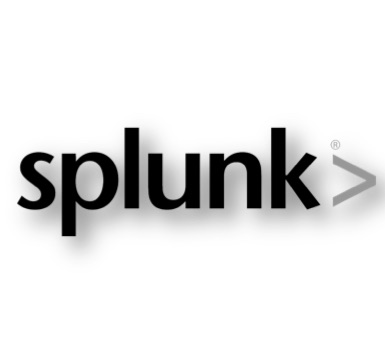
Indexed volume in bytes per pool, index, source, source type, and host. See Troubleshoot HTTP Event Collector in the Getting Data In manual. HTTP Event Collector saves metrics about itself to this log file. conf files, a checksum is calculated and logged with the full. When Splunk Enterprise services are running, and a change is made to the. $SPLUNK_HOME/etc/slave-apps/_cluster/local conf files in the monitored file paths.Ĭonfiguration change monitoring is enabled by default. conf files at the filesystem level, including the creation of. See search head clustering in the Distributed Search manual. Audit.log is the only log indexed to the _audit index.Ĭontains messages about configuration replication related to Search Head Clustering.
#SPLUNK LOGO MANUAL#
See search dispatch directory in the Search Manual and audit events in the Securing Splunk Manual. With the search_id, you can review the logs of a specific search in the search dispatch directory. For example, if you're looking for information about a saved search, audit.log matches the name of a saved search (savedsearch_name) with its search ID (search_id), user, and time fields. Information about user activities such as a failed or successful user log in, modifying a setting, updating a lookup file, or running a search.

See Dispatch directory and search artifacts in the Search Manual.Ī list of the internal logs in $SPLUNK_HOME/var/log/splunk with descriptions of their use. The search logs are not indexed by default. These logs record data about a search, including run time and other performance metrics. The Splunk search logs are located in sub-folders under $SPLUNK_HOME/var/run/splunk/dispatch/.

See About Splunk Enterprise platform instrumentation.
#SPLUNK LOGO SOFTWARE#
If the Splunk software is configured as a Forwarder, the monitored logs are sent to the indexing tier. This path is monitored by default, and the contents are sent to the _introspection index.

These logs record data about the impact of the Splunk software on the host system. The Splunk Introspection logs are located in $SPLUNK_HOME/var/log/introspection. If the Splunk software is configured as a Forwarder, a subset of the logs are monitored and sent to the indexing tier. This path is monitored by default, and the contents are sent to the _internal index. The Splunk software internal logs are located in: $SPLUNK_HOME/var/log/splunk. All of these tasks, and many of the steps in-between, generate data that the Splunk software records into log files. Pick the JSON and specify the Application/cybertriage source type.Splunk software is capable of many tasks, from ingesting data, processing data into events, indexing events, and searching those events. Next, import it into Splunk with the “Add Data” feature. You first need to generate a JSON Report from the Cyber Triage dashboard. You can also import your Cyber Triage results back into Splunk so that you can later do searches and correlations. You can do this with the Standard (desktop) and Team versions of Cyber Triage. If you configured Cyber Triage so that it uses your own SSL certificate instead of the default one, then change the verify server cert property in the Splunk app to True and place your PEM formatted cert into %SPLUNK_HOME%\etc\auth as cybertriage.pem.

You can start the collection by adding Cyber Triage as a “Trigger Action” for an Alert. You will need to specify the hostname or IP of the target endpoint. To start a collection of a remote endpoint, you’ll need to configure the app to define things like the Cyber Triage Server hostname and API key. It pushes a collection tool to the remote endpoint to collect volatile and file system data and analyzes the data. You can start a collection from within Splunk and import the Cyber Triage results. What are the usage details?Ĭyber Triage allows you to perform a mini-forensic investigation on an endpoint. The Cyber Triage/Splunk integration allows you to remotely start collections about suspicious endpoints and bring the results back to Splunk for multi-source correlations and alert triage. Resolving incidents faster maximizes your analysts’ time because they wont need to wait for the collection to happen, and having the most context in your SIEM improves future alert triage. Users have more context when they investigate similar alerts in the future and they know how common a process is or where else it was seen. The Cyber Triage analysis results are imported into Splunk so that the data is available for future investigations. Splunk can remotely launch Cyber Triage collections and users can export Cyber Triage data into Splunk. Their purpose is to improve the use of data within these types of organizations to gain clarity and drive innovation. Splunk is designed to help IT, DevOps, and security teams improve their organizations by optimizing data from a variety of sources.


 0 kommentar(er)
0 kommentar(er)
